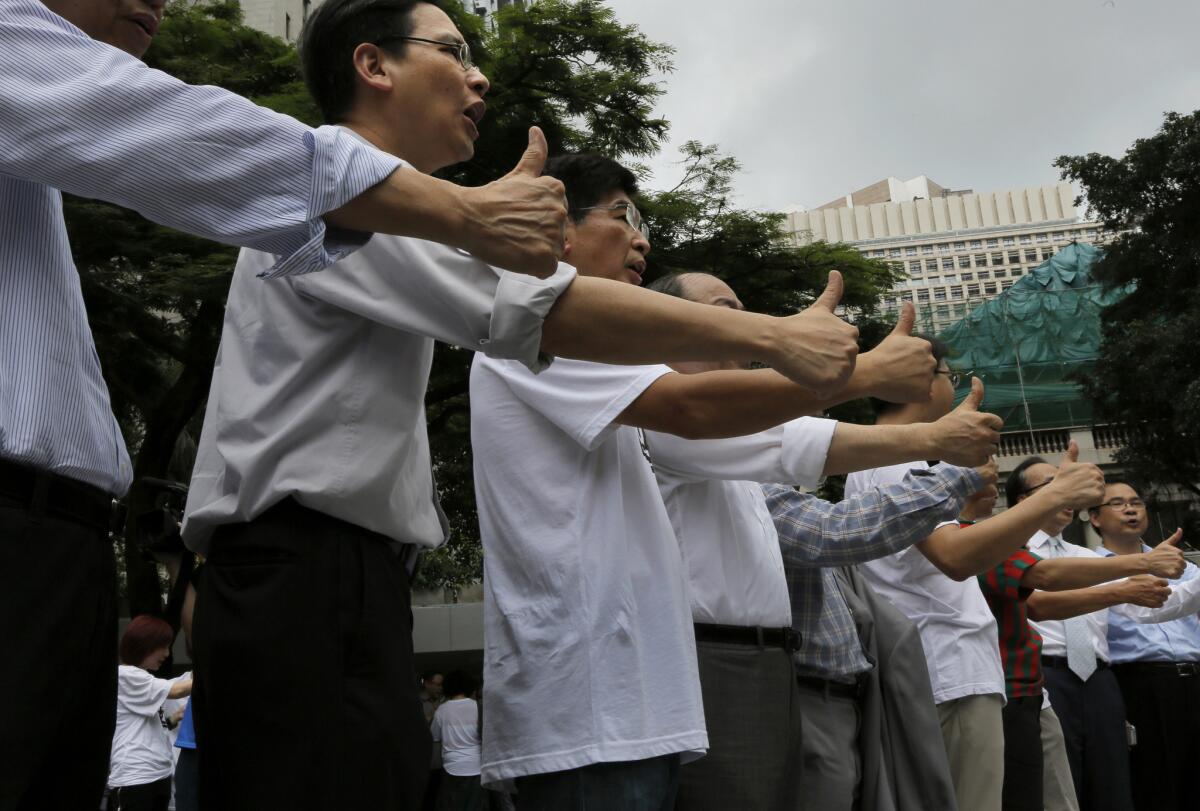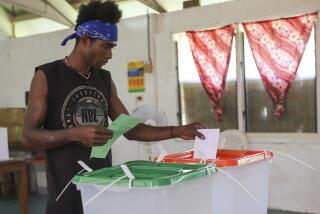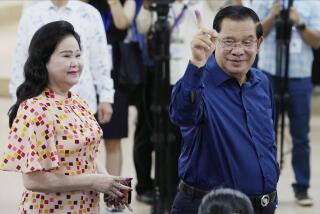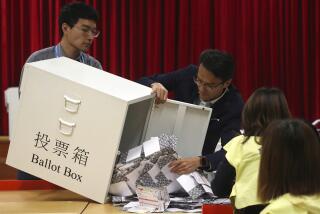Strong turnout for referendum on choosing Hong Kong’s leader

- Share via
Reporting from Beijing — More than 400,000 Hong Kong residents cast electronic ballots Friday in a nonbinding referendum aimed at giving the Chinese city’s 7.2 million people more of a voice in how their chief executive is selected, organizers of the vote said.
However, authorities in Beijing denounced the exercise as illegal, and the online voting system was repelling heavy cyber-attacks.
Voting is slated to continue for the next 10 days, but participation has already far exceeded what organizers of the Occupy Central movement had hoped for. As recently as last week, leaders had said they would consider the exercise a success if at least 100,000 people took part.
Residents of the former British colony can vote online, by mobile phone or in person at a few scattered balloting stations by June 29.
China’s State Council, or cabinet, has denounced the voting, saying all the proposals on the ballot are not in line with the Basic Law, which laid out guidelines for how Hong Kong was to be governed after the territory returned to Chinese rule in 1997. Under a system known as “one country, two systems,” Hong Kong is to have a high degree of autonomy from Beijing for 50 years, and residents enjoy greater political and personal freedoms than their mainland counterparts.
According to the Basic Law, Hong Kong residents are to be able to vote directly for their city’s chief executive in 2017. But the voting rules have not been settled yet, and organizers of this month’s referendum fear that the mechanism that will be proposed by mainland authorities will fall short of full democracy. They mostly worry that candidates who are unacceptable to China’s rulers will be screened out by a selection committee stacked with pro-Beijing members.
By voting in the nonbinding referendum, which is being run by the University of Hong Kong’s Public Opinion Program, participants hope to influence the rule-making for the election.
Organizers of the movement, whose full name is Occupy Central with Peace and Love, have threatened to stage a nonviolent mass sit-in in the city’s financial district, known as Central, if the ultimate election rules fail to meet their expectations.
In the run-up to Friday’s balloting, local opponents of Occupy Central launched a campaign aimed at dissuading people from participating. A video released by the group Silent Majority, which said it commissioned a traffic impact study, warned that a civil disobedience campaign in which 10,000 blocked the streets of Central would paralyze the city.
“In just one hour … 1.3 million Hong Kong people are stuck on the island,” says the narrator, Robert Chow. “Like dominoes, our traffic system collapses. … Ambulances, fire engines and police cars are immobilized. Pregnant women, babies, children need help – then what?”
“Occupy Central – they can kill this city,” the video concludes. “The question is, do we let them?”
Ahead of the referendum, public opinion polls showed Hong Kongers to be lukewarm on the entire Occupy Central campaign. It was unclear whether attacks on supporters in the run-up to the vote may have added momentum to the movement, which just weeks ago looked to be flagging amid internal disagreements.
Last week, authorities in Beijing released a white paper saying that some people in Hong Kong were “confused or lopsided in their understanding” about the Basic Law and warned that the city does not enjoy “full autonomy” but has the “power to run local affairs as authorized by the central leadership.” The publication set off a firestorm in Hong Kong.
This week, the website of Apple Daily, the local newspaper that has expressed support for the movement, was hit by hacking attacks.
On Friday, the chief executive of San Francisco based CloudFlare, a tech company maintaining the voting website, said the system had been under assault by a serious cyber attack.
In a message on Twitter, CloudFlare Chief Executive Matthew Prince called the assault “one of the largest and most persistent DDoS attacks in the history of the Internet.” DDoS stands for distributed denial of service, a method to flood a computer system with an overwhelming number of messages.
However, technicians were apparently able to defend the system sufficiently enough to allow hundreds of thousands of people to vote.
More to Read
Sign up for Essential California
The most important California stories and recommendations in your inbox every morning.
You may occasionally receive promotional content from the Los Angeles Times.











